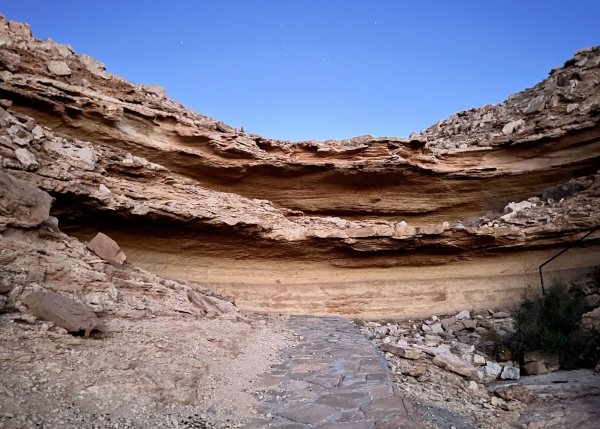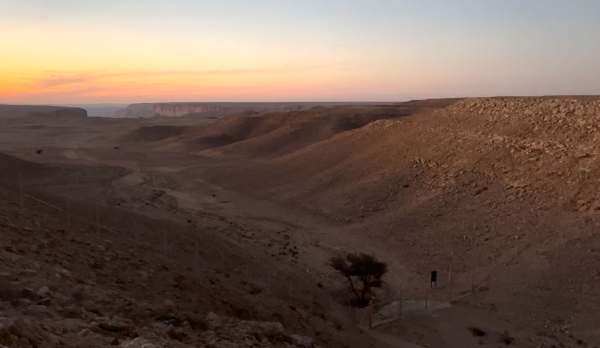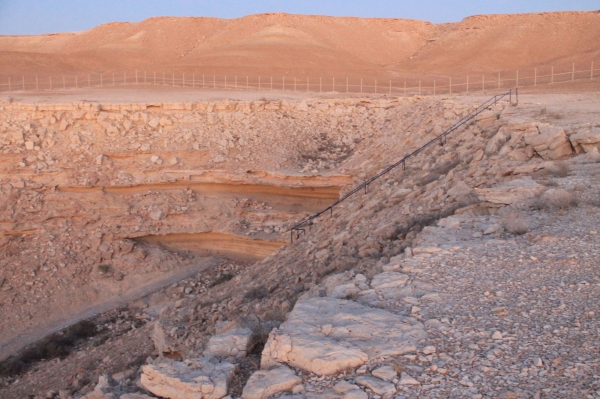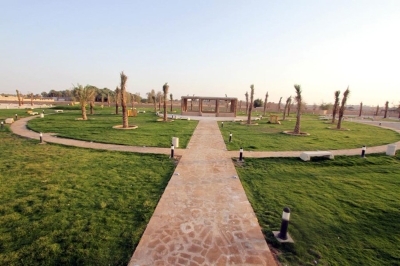



Imam Turki Bin Abdullah Cave is a rock cavity in Aliyah Plateau, located within the Tuwaiq Mountain Range, 130 km south of Riyadh, the capital of the Kingdom of Saudi Arabia. Imam Turki Bin Abdullah Bin Mohammad Al Saud, the sixth ruler of Al Saud family and the founder of the Second Saudi State, took refuge there after the fall of Diriyah, the capital of the First Saudi State. He used it as a base for his movements in his plan to restore his ancestors' rule and remained there for about two years.
Location of Imam Turki Bin Abdullah Cave
Imam Turki Bin Abdullah Cave is located approximately 110 km west of al-Dilam City, northwest of Hawtat Bani Tamim City, and northeast of al-Hariq City. It can be accessed through multiple routes, including the eastern route via Wadi Mawan and Wadi Wuthaylan, as well as the southern route between Wuthaylan and Wadi al-Majami. The cave is bordered by al-Najibi - a small branch - to the north, Jahaf al-Ghadeer to the south, Ras Muthallalah (an old water source) to the east, and Kanaf Cave to the west.
Description of Imam Turki Bin Abdullah Cave
Imam Turki Bin Abdullah Cave is located northwest of Aliyah Plateau, within the Tuwaiq Mountain Range. It is a rocky formation in a rugged area that is difficult to access, separated from the Tuwaiq Mountains by gorges. The cave itself is a rock cavity facing west, consisting of two crescent-shaped levels that follow the same curvature, though the upper cave is more extensive than the lower one. The cave also contains internal cavities and has multiple directions, allowing movement inside based on the position of the sun. It is now enclosed by an iron fence to protect it as a historical and national landmark, and stone stairways have been built to facilitate access to it.
Imam Turki Bin Abdullah and the cave
The cave was named after Imam Turki Bin Abdullah due to his refuge there following Mohammed Ali Pasha's campaign against the First Saudi State in 1818. Imam Turki chose the cave because of its inaccessibility and its connection to several cities and villages, including al-Kharj, al-Hawtah, al-Hariq, al-Hulwah, and al-Dilam. He made it a fortified base for his movements, aided by its strategic location, which allowed only his loyal men to reach him. Imam Turki remained hidden in the cave for nearly two years, planning and executing reconnaissance and offensive operations against his rivals in Diriyah until he succeeded in driving them out and reclaiming power. His strategy involved attacking at night and hiding during the day, a tactic he implemented along the 250 km stretch of Wadi Hanifah.
The plateau contains numerous rock cavities, including two caves - one that Imam Turki used as a night shelter and the other as a daytime hideout. His only companions were his rifle "Sahabah" and his sword "al-Ajrab." In Aliyah Plateau, Al Shamir tribe resided, from whom Imam Turki married Huwaidiyah Bint Ghidan, the daughter of Sheikh of Al Shamir from the Ajman tribe. She gave birth to his son Jalawi, whom he named after the period of exile (Jala’), and Jalawi became the ancestor of 'Al Jalawi' family.
Imam Turki mentioned the cave in his poetry, including the following verses:
Jalast fi Ghar Ala al-Turuq Kashaf (I sat in a cave, overlooking the paths),
Ala Tariq Nayif fi Aliyah (On a high road in Aliyah)
wa-Tuwaiq Gharb wa-Kashif Kull al-Atraf (With Tuwaiq to the west, revealing all sides),
Wa-Khadheet Bih Waqt wa-Lah Qabiliyyah (And I spent time there, as it had its suitability).
Related quizzes
Related articles
